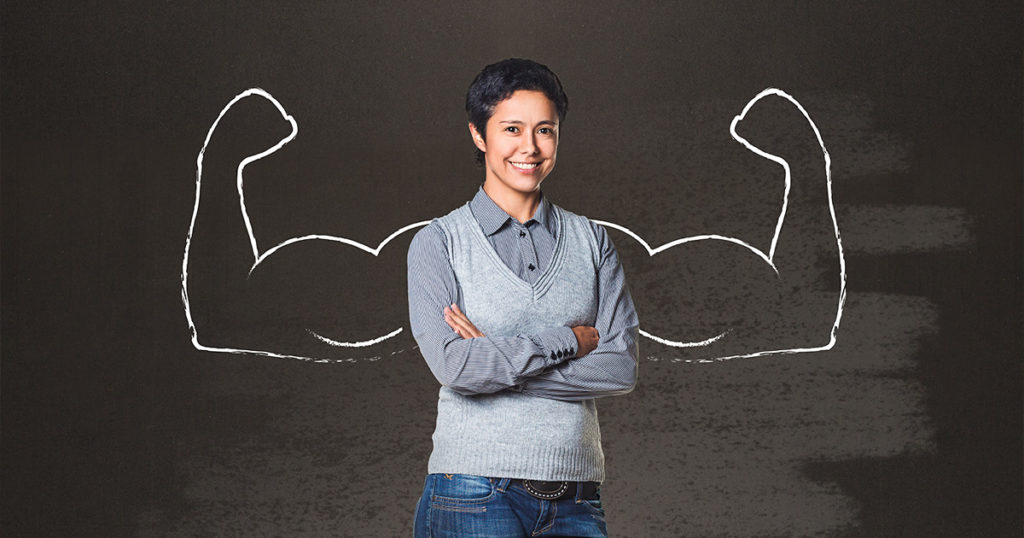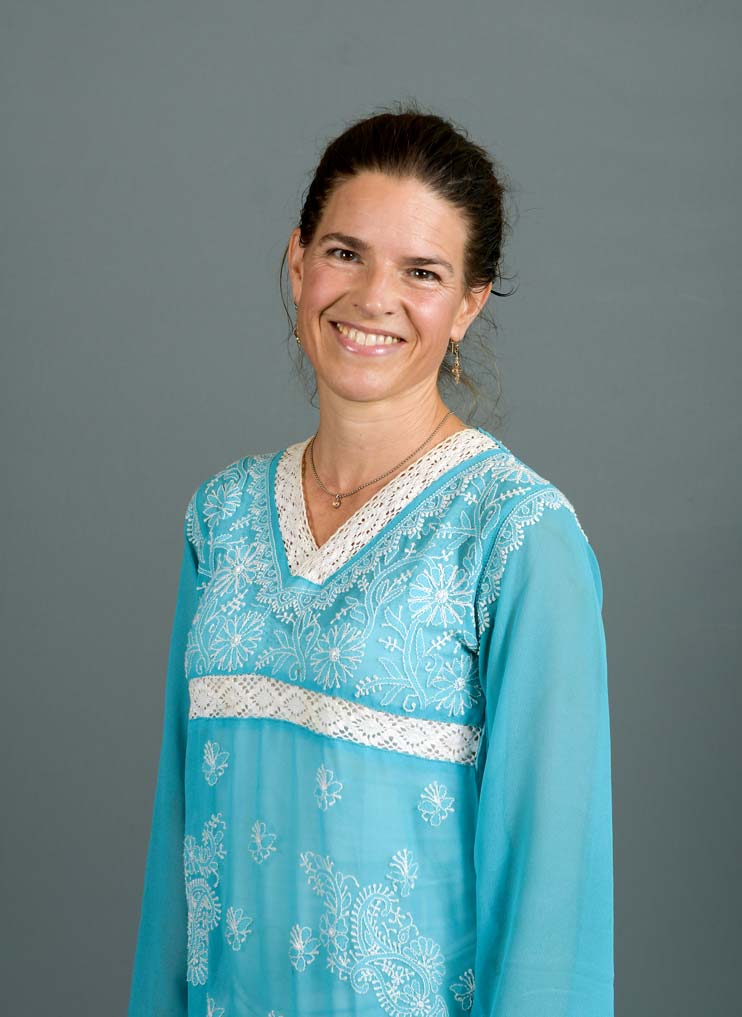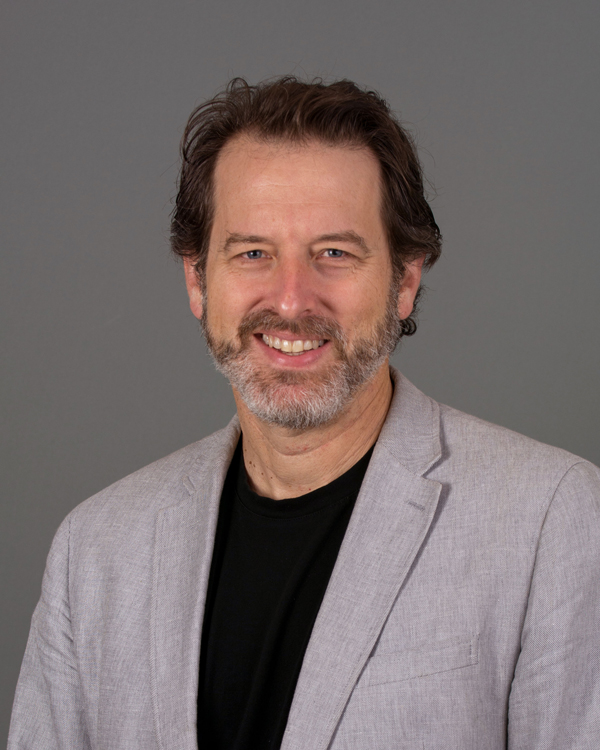Today’s blog is written by Malynn Utzinger, Director of Integrative Practices, and Tim Weitzel, ESI Architect.
If we want to reignite innovation and passion, we must rehumanize work.
-Silicon Valley CEO of Several Start-ups
If we want to rehumanize work, we need to be more human in the workplace.
-Promega’s ESI Bootcamp
Vulnerability is the birthplace of intimacy, trust connection, creativity, innovation. For leaders, it is the birthplace of trusted influence. But it is not permission to overshare.
-Brené Brown
Myths of Vulnerability
It’s important that we start off by making a few things about vulnerability crystal clear: being vulnerable is not about over-sharing, being emotional—or worse, gushy. It is not about sacrificing necessary boundaries or letting go of all discernment when speaking. Vulnerability, as we intend it, is about being real with others. It is about being clear and honest enough within yourself that you can use courage and clarity to state a need or a perspective. Quite the opposite of requiring tears or grand displays of emotion, vulnerability can be expressed with utter command of one’s emotions, so that the clarity and authenticity of the message is what remains.
Vulnerability is also knowing that you cannot know everything or do your work perfectly or even to your full satisfaction sometimes, and it is having this same understanding and acceptance for others. It is being able to speak to that honestly so that we can build sustainable bridges between ourselves and others. We call this speaking our truths–with discernment.
Finally, vulnerability is knowing that while we must give our best efforts where and whenever we can, we must also know what we can’t control. In most cases, what we cannot control is outcomes. Therefore, vulnerability is embracing the uncertainty in how things will go in our relationships and in our work if we risk emotional exposure. We cannot always know how others will hear what we share, but we can learn to take that risk and speak in service to a common goal. For example, we might decide to share that the reason we are being so obsessive or insistent on a process is because of a past failure (perceived or real) that we still carry with us. Even though we cannot control what others will think of our story, we trust that the sharing may help them share a need of their own or to hear our own need differently, so that we can all work together. This is true in every relationship of our lives, where we learn to share something true for the sake of allowing another human being to know us as we are.
The writer Anaïs Nin penned these words on the subject: “And then the day came when the risk to stay tight in a bud was greater than the risk to bloom.” Our ESI team might say that the risk of staying quiet or standing in judgment (without vulnerability) one day becomes greater than the risk of sharing from of our authentic experience so that others can know why it is we care about what we care about, why we point one way when they point another. Then and only then can we come to know each other (at work and at home) in a way that makes what we produce together really blossom. Many say that because of this willingness to allow something real in ourselves to be seen, vulnerability is the birthplace of courage and true creativity, the source of empathy and connection, and the heart of aliveness. This is true in our families. True in our communities. And true in the most vibrant of companies and organizations, we know of.

In Western society, three myths about vulnerability are constantly reinforced: at home, at school, at work, on sports teams and glee clubs . . . everywhere. In the ESI Bootcamp we identify and work to dispel these three primary myths as follows:
Myth #1: Vulnerability = Weakness. Most of us were raised to believe that vulnerability was synonymous with weakness. The weak kid who got beat up on the way home from school was vulnerable. The unpopular kid who ate alone in the cafeteria was vulnerable. The lame-duck leader who could not get anything done was vulnerable. Weakness is weakness. Vulnerability is strength and courage. Brené Brown writes that when she first started researching vulnerability, people would describe it as things like, “It’s the first date after my divorce.” “It’s sitting with my wife who has Stage 4 breast cancer and making plans for our three-year-old and five-year-old.” “It’s starting my own business.” “It’s taking my business public.” “It is participating in a major product design that is the first of its kind with a tremendous amount of money and human effort at stake.” It is working across functions and not understanding fully the “language” of others who are critical to your success and without a road map for going about it, and more.
Want to learn more? Take a look at our ESI Mastery blog series, beginning with this blog.
It is completely understandable that we try to control what we can, and we should do this in some areas. But to figure it all out, to really come together as a team, we also need to let our guard down. We need to be more accepting of our own and others’ fallibility. Too often we think of strength and courage as staunchly defending our position, as carrying the weight of the world on our shoulders without even acknowledging that we are doing it, or expressing anger over something when it is actually fear and grief that we are driving the anger. In fact, expressing that fear or grief in a grounded way–without coming to pieces or expecting others to fix it for us–would be a true act of vulnerability. Many of us have never had this modeled effectively, and that is one of the reasons it is so hard to do. But if you have ever been lucky enough to know a person who could express a vulnerability and still express appropriate strength and belief in their own contribution, it has probably made an impact on you and helped you to do the same, even if in small and tentative ways at first. In general, when it comes to vulnerability, even a small, initial expression is recognized and appreciated and therefore moves critical human connections forward.
Myth #2: Vulnerability is letting it all hang out. Too many people think that being vulnerable is sharing everything you are thinking and feeling at all times and under all circumstances. Yet, this pattern of expressing, again and again, a sense of insurmountable difficulty or burden or fear can become a form of victim mentality and stuckness, rather than the kind of thoughtful expression that is intended to lead to growth, healing, and functionality. Again, we are not saying we must never repeat a concern of fear. Nor are we saying we must project overarching, unassailable self-confidence. Rather, we are suggesting that we might say, “I am concerned about this because it was tricky for me in the past. What do you think?” and then really listening. It is saying, “I am having a problem with what is happening; can we table the decision for 30 minutes while we discuss our team’s dynamics.” It is saying, “It’s hard staying motivated when we are not recognized for our accomplishments and only told to do more. How can we support each other here?”
Myth #3: “I don’t do vulnerability.” The essence of this myth is that we think we can eliminate vulnerability from our lives by convincing ourselves we are not vulnerable on the inside and projecting total control or unassailable self-confidence on the outside. (This is different than holding the full inner spectrum as true, being able to say at once, “I am afraid or sometimes make mistakes, and even so, I believe in my strengths and in my contribution.” Being able to work with both as true is a valuable form of psychological maturity.) The truth is that for most of us (there are always exceptions) when we brace ourselves against the reality we are facing—against our vulnerability—it ends up doing us, i.e. it ends up leaking through in less productive ways. Far from being an effective shield, holding fast to the illusion of invulnerability often causes the very behavior that drives divisiveness and mistrust. For example, to maintain our image of unassailable self-confidence, we might need to do things like win arguments at all costs. We, therefore, don’t seek input or feedback when we could really use it. In this example, our incomplete information may lead to a less than optimal solution, causing others to question us further, whereas, had we had a level of “okayness” with our incomplete understanding upfront, we might have been willing to ask a few simple questions, non-defensively and upfront, that might have led to a better path for all.
A Promega Example
Not long ago, plans were being made at a Promega branch to build a new Component Manufacturing Center (CMC). This was a great honor for everyone at the branch as well as a clear statement from headquarters about the importance of the branch within the larger organization. In addition to its strategic value for Promega, the planned facility promised both long-term growth, advancement opportunity, and job security for the people who worked there. After much planning, the unexpected happened. Due to the large difference in cost to build at the branch site versus in Madison, the decision was made to build the CMC in Madison. Understandably, this sent shockwaves of disappointment through the branch. The pride and excitement of the past many months were erased by a necessary but discouraging decision. Additionally, fear, worry, and anger quickly replaced pride and excitement as the ruling emotions at the branch. The leadership team at the branch organized a highly collaborative and participatory process to allow people to voice their concerns and hear the best answers available at the time. While there were some bumps along the way, this process was highly effective not just in stabilizing the environment at Promega, it also helped the branch shift from feeling resentment and fear to dedicating themselves to doing their part. They began to write a new story—one that went, “When we are successful here, it means our best efforts will support the success at the new facility in Madison. Let’s shift our energy to doing the best work we can here to make our total Promega product the best it can be. This way, we can all enjoy a sense of thriving and success together.”
Such an outcome doesn’t occur by accident and is almost never achieved by someone in leadership telling everyone to “buck up” or swallow their concerns. One moment of vulnerability was especially critical in this re-orientation. The leadership team had organized an all-company meeting to be led by an expert facilitator. A desired outcome for the meeting was for people to be able to speak openly and publicly about their experience (i.e., to be upset, to be scared, to be appropriately angry and concerned. In short, to be vulnerable). In an unrehearsed interaction between the branch general manager and the facilitator, the GM broke from her usual optimism and said, “I feel responsible for our losing the CMC . . .” and went on to share her experience. She had not planned to tear up, but she did, thus allowing everyone there, especially those in other management positions, to own the sense of sadness and responsibility they all felt. Far from being judged and/or criticized, the branch GM was supported by her managers and first-line staff alike. One by one, other managers began making their own disclosures, expressing their own stories, including sharing that they, too, had felt grief and responsibility. Scientists and staff said things like, “I am afraid I will lose my job and not be able to support my family” and “I am afraid I’ll be forced to move when my family is rooted here.” They did not wallow in self-pity or victim mentality. They shared in a straightforward manner what was behind their fear and anger; they listened to each other; and story by story, they began rebuilding collective trust. It was like releasing into the open air all of the quiet and unsaid fears, but the hearing of them together, along with excellent facilitation, which allowed people to feel the value of their contribution, turned the energy from private anger and fear to a collective feeling of pulling together to make the most of the situation—to find the meaningful certainty within the uncertainty. People began to remind themselves of their excellent history of contribution and the valuable skills within their teams. They began to refocus on the positive feeling of contribution to ongoing and future projects. All of this put them in a position to more effectively discuss the reality of the situation and deal with it more effectively. The leadership team was able to provide the space for the branch as a whole to re-orient themselves from disappointment and despair to one of commitment to the CMC’s successful operation. Now, the CMC is going online very soon in Madison, and the branch is thriving in its own right. They are hard at work in developing the sense of themselves as one team, operating from two locations, each critical to the other’s success.
How Does this Translate to My Work?
You might be saying to yourself, “Great story! But how does this relate to me?” A first step might be to draw on the table below to check in with yourself about whether you are approaching a situation as Dialogue or Debate. Dialogue uses vulnerability with discernment as a way to build trust and collaboration rather than the debate (win-lose) approach, which almost never results in the most long-term success, whether innovation, aliveness, or satisfaction, for those involved.
| Vulnerability and Flexibility (Dialogue) | All-or-Nothing, Win-Lose (Debate) |
| I seek to understand. | I seek to convince. |
| There may be many ways to view the situation. | There is one best way to view this situation-mine. |
| I share my reality/experience in a way that fosters authentic connection and builds trust. | I deal in facts and data only. Trust in your competence is all that matters to me. |
| I am accepting and work with the messiness of healthy relationships. | I strive to ignore or eliminate human shortcomings from work relationships. |
| I recognize your needs as important, too. | My needs are paramount. |
| My goal is to facilitate learning whenever possible. | Expediency, control, and minimum discomfort are my goal. |
| I am authentic and share my background story/thinking. | I defend my persona and withhold information to maintain power. |
| I am open to feedback about my ideas as well as my style/approach. | I am who I am. Get used to it. |
| My goal is to generate shared understanding and commitment. | My goal is to win. |
| What are your additional ideas? |
We have more resources for scientists on career development and success in our Student Resource Center.

As a Family Medicine physician and Director of Integrative Practices for Promega, Malynn thinks of herself as one who stands with a foot on either side of the chasms we humans encounter in life, helping us stitch together our worlds, our words, and our ways of being with each other. At Promega, her work in ESI has focused on helping people begin with self-understanding and move toward better understanding of others, ultimately supporting the roots and branches of a vibrant work community in which people feel belonging and a high sense of contribution. Malynn has worked in Family Medicine, Integrative Medicine, and Preventive Oncology at the UW, as the Director of Women’s Health for the Chopra Center in San Diego, as a consultant in integrative medicine and emotional intelligence for GHC and Eileen Fisher in NYC, and in research at Planetree and the Preventive Medicine Research Institute of San Francisco. She now lives in Madison, WI with her husband and son.

Tim is Promega’s ESI Architect, and he has spent his entire 30+ year career in Cultural Development Consulting, Executive Coaching, Executive Assessment, and Leadership development. From the beginning, he has stressed authenticity, courage, compassion and connection both in his approach with clients as well as being the foundation for excellent and sustainable leadership. He works with his clients using a variety of tools such as Depth Psychology, Day-in-the-Life Simulation Assessment, 360 Feedback, Personality Inventories and more to identify strengths and development gaps that create focused organizational change and/or learning goals. Tim has coached people at all levels and consulted in many top companies including Promega, Marriott, Walmart, McKesson, Lockheed Martin, Schneider National, Wisconsin Gas Company, Raytheon, Fiserv, Adventist Health, Pacific Gas & Electric, Trek Bicycle, John Deere Credit, General Motors, and many more top-tier organizations as well as numerous smaller regional and local businesses.
Related Posts
Explore our Corporate Responsibility Website to learn more about our initiatives and activities.
Latest posts by Promega (see all)
- Beyond Ozempic: The New Frontier of Obesity Research - April 18, 2025
- One Health and H5N1: Promega’s Commitment to Holistic Solutions - April 8, 2025
- Overcoming qPCR Inhibitors: Strategies for Reliable Quantification - March 13, 2025
